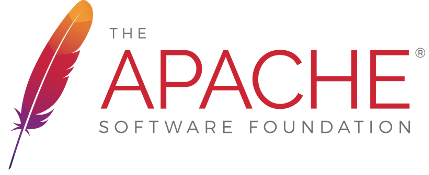Features in CXFA Feature in CXF is a way of adding capabilities to a Server, Client or Bus. For example, you could add the ability to log messages for each of these objects, by configuring them with a LoggingFeature. To implement a Feature, you must subclass AbstractFeature below. By default the initialize methods all delegate to initializeProvider(InterceptorProvider), so if you're simply adding interceptors to a Server, Client, or Bus, this allows you to add them easily. public abstract class AbstractFeature extends WebServiceFeature implements Feature {
public String getID() {
return getClass().getName();
}
public void initialize(Server server, Bus bus) {
initializeProvider(server.getEndpoint(), bus);
}
public void initialize(Client client, Bus bus) {
initializeProvider(client, bus);
}
public void initialize(InterceptorProvider interceptorProvider, Bus bus) {
initializeProvider(interceptorProvider, bus);
}
public void initialize(Bus bus) {
initializeProvider(bus, bus);
}
protected void initializeProvider(InterceptorProvider provider, Bus bus) {
// you could customize the interceptors in the provider here
}
/**
* Convenience method to extract a feature by type from an active list.
*
* @param features the given feature list
* @param type the feature type required
* @return the feature of the specified type if active
*/
public static <T> T getActive(List<? extends Feature> features,
Class<T> type) {
T active = null;
if (features != null) {
for (Feature feature : features) {
if (type.isInstance(feature)) {
active = type.cast(feature);
break;
}
}
}
return active;
}
}
Writing and configuring the FeatureCXF provides several features to configure commonly used capabilities, such as logging, failover, policies, addressing, and reliable messaging. You can go to the FeaturesList for more information. Writing a FeatureIt is very easy to write a new feature; your feature just needs to extends the AbstractFeature and implement initializeProvider or write customizing code for configuring client or server interceptors. Here is an example for implementing the logging feature. public class LoggingFeature extends AbstractFeature {
private static final int DEFAULT_LIMIT = 100 * 1024;
private static final LoggingInInterceptor IN = new LoggingInInterceptor(DEFAULT_LIMIT);
private static final LoggingOutInterceptor OUT = new LoggingOutInterceptor(DEFAULT_LIMIT);
int limit = DEFAULT_LIMIT;
@Override
protected void initializeProvider(InterceptorProvider provider, Bus bus) {
if (limit == DEFAULT_LIMIT) {
provider.getInInterceptors().add(IN);
provider.getInFaultInterceptors().add(IN);
provider.getOutInterceptors().add(OUT);
provider.getOutFaultInterceptors().add(OUT);
} else {
LoggingInInterceptor in = new LoggingInInterceptor(limit);
LoggingOutInterceptor out = new LoggingOutInterceptor(limit);
provider.getInInterceptors().add(in);
provider.getInFaultInterceptors().add(in);
provider.getOutInterceptors().add(out);
provider.getOutFaultInterceptors().add(out);
}
}
/**
* This function has no effect at this time.
* @param lim
*/
public void setLimit(int lim) {
limit = lim;
}
/**
* Retrieve the value set with {@link #setLimit(int)}.
* @return
*/
public int getLimit() {
return limit;
}
}
Adding a Feature programmaticallyTo add the feature to both server and client, you can use the Feature annotation on the service class @org.apache.cxf.feature.Features (features = "org.apache.cxf.jaxws.service.AnnotationFeature")
public class HelloServiceImpl implements HelloService {
public String sayHi() {
return "HI";
}
}
You can also add the feature to the server by using ServerFactoryBean, or the client by using the ClientFactoryBean or the ClientProxyFactoryBean import org.apache.cxf.frontend.ServerFactoryBean; import org.apache.cxf.frontend.ClientFactoryBean; import org.apache.cxf.frontend.ClientProxyFactoryBean; ... ServerFactoryBean serverFactoryBean = new ServerFactoryBean(); MyFeature myFeature = new MyFeature(); // added my feature to the serverFactoryBean serverFactoryBean.setFeatures(Collections.singletonList(myFeature)); ... ClientFactoryBean clientFactoryBean = new ClientFactoryBean(); clientFactoryBean.setFeatures(Collections.singletonList(myFeature)); ... ClientProxyFactoryBean clientFactoryBean = new ClientProxyFactoryBean(); clientFactoryBean.setFeatures(Collections.singletonList(policyFeature)); It is also possible to add a feature when publishing an Endpoint via Endpoint.publish. For example, the Logging feature can be added as follows: Endpoint.publish import javax.xml.ws.Endpoint;
import org.apache.cxf.ext.logging.LoggingFeature;
...
CustomerService implementor = new CustomerServiceImpl();
Endpoint.publish("http://localhost:9090/CustomerServicePort",
implementor,
new LoggingFeature());
Adding a Feature through configurationHere are some examples on using configuration files to add features. You can find more information about the CXF provides features at FeaturesList. <beans xmlns="http://www.springframework.org/schema/beans"
xmlns:xsi="http://www.w3.org/2001/XMLSchema-instance"
xmlns:cxf="http://cxf.apache.org/core"
xmlns:jaxws="http://cxf.apache.org/jaxws"
xsi:schemaLocation="
http://cxf.apache.org/core http://cxf.apache.org/schemas/core.xsd
http://www.springframework.org/schema/beans http://www.springframework.org/schema/beans/spring-beans-2.0.xsd
http://cxf.apache.org/jaxws http://cxf.apache.org/schemas/jaxws.xsd">
<!-- adding the feature to the bus-->
<cxf:bus>
<cxf:features>
<cxf:logging/>
</cxf:features>
</cxf:bus>
<bean id="myfeature" class="com.example.Myfeature"/>
<!-- adding the feature to the client -->
<jaxws:client id="client"
serviceClass="org.apache.hello_world_soap_http.Greeter"
wsdlLocation="wsdl/hello_world.wsdl">
<jaxws:features>
<bean ref="myfeature" />
<jaxws:features>
</jaxws:client>
<!-- adding the feature to the server -->
<jaxws:server id="server" serviceBean="org.apache.hello_world_soap_http.GreetImpl" address="http://localhost:8080/simpleWithAddress">
<jaxws:features>
<bean class="com.example.Myfeature"/>
</jaxws:features>
</jaxws:server>
</beans>
|

